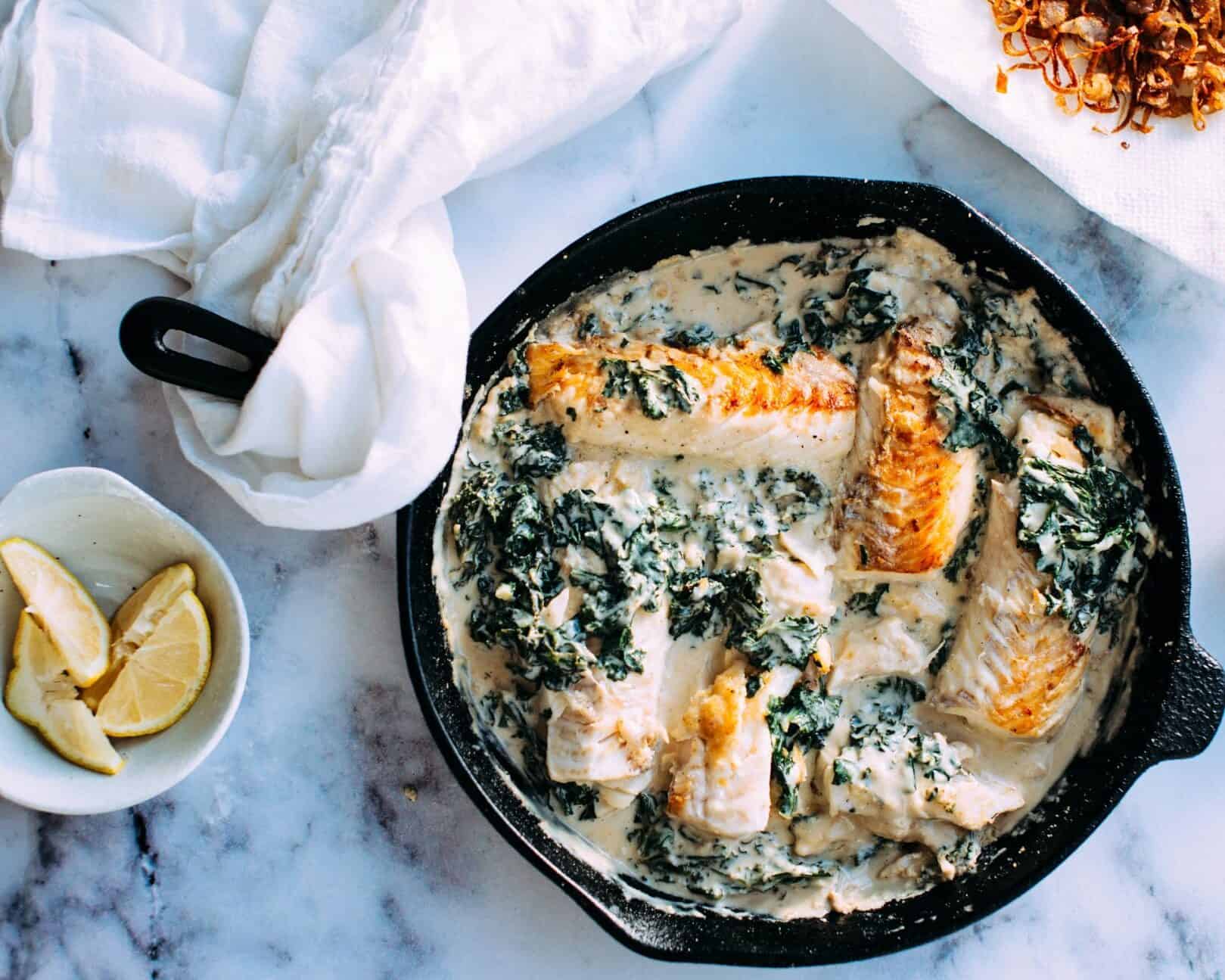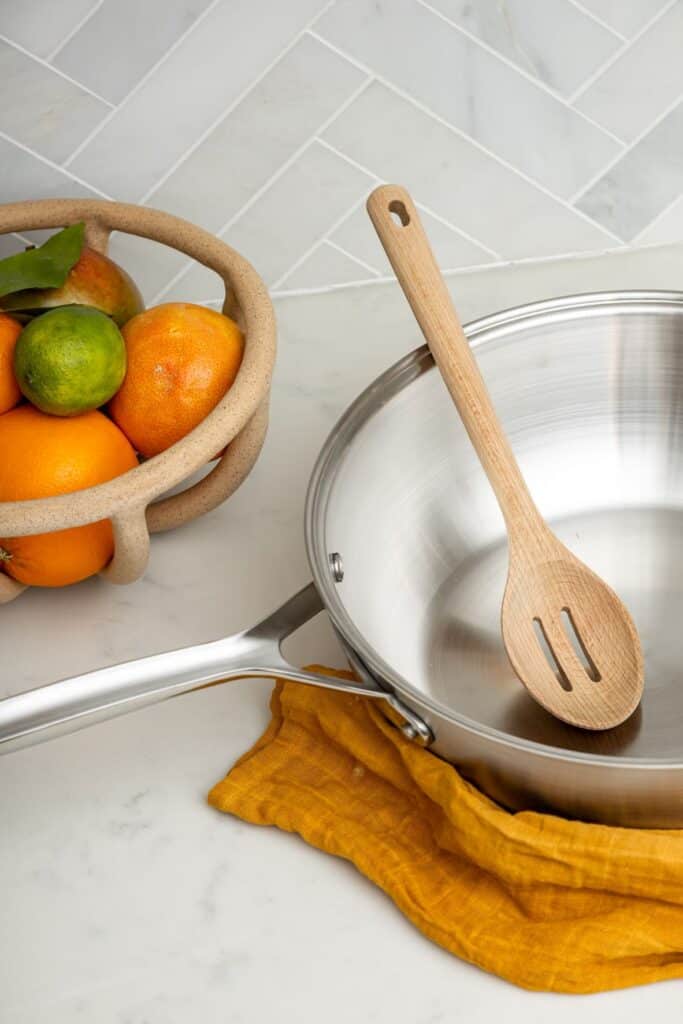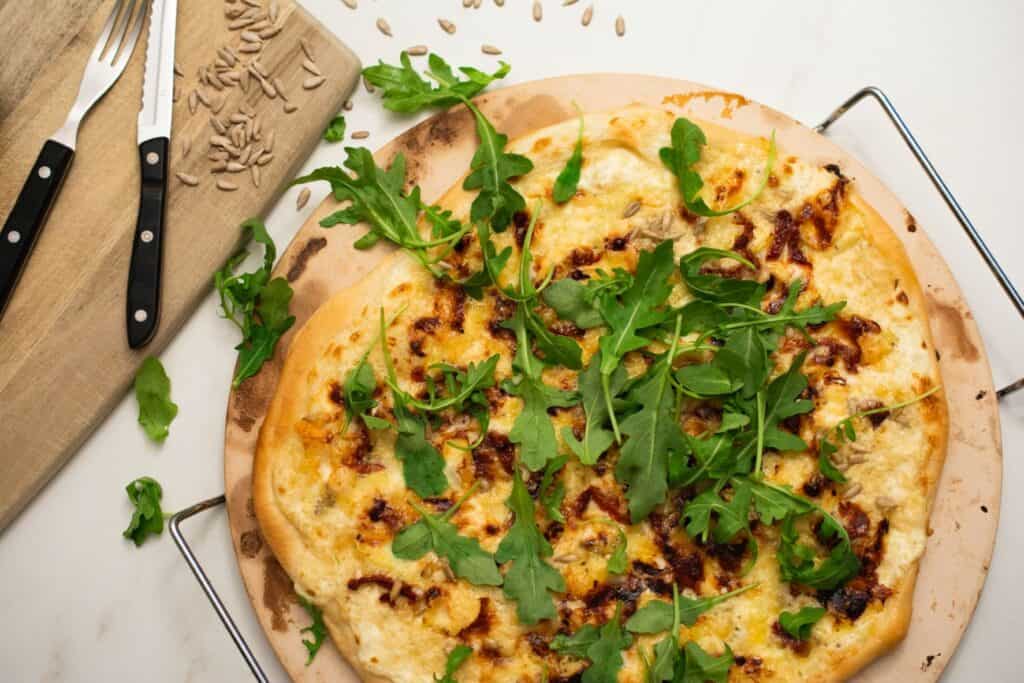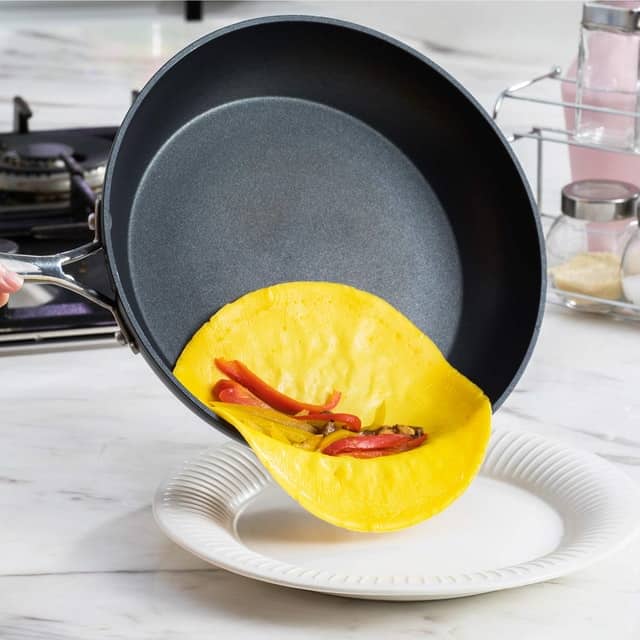When it comes to cooking for your family, you definitely want to rest assured that you are using non-toxic cookware that doesn’t leach toxins into your food or beverages. Let’s take a look at some of the most trusted materials and cookware options available.
Cast Iron
Cast Iron is a fantastic type of non-toxic cookware. While it does leach small amounts of iron into food, this is not thought a problem for the majority of people. It can even be potentially helpful for those with low iron.

As a member of the Amazon affiliate program, I earn a small commission on qualifying purchases.
Frequently cooking high-acid food like tomatoes can break down the seasoning, so be mindful when cooking high-acid foods. A well-seasoned pan is key. You can read here about the science of cast iron seasoning.
Cast iron cooks well, it’s pretty low maintenance to clean, and it’s inexpensive. Lodge is my go-to brand, which is American made and has been around for many years. Lodge cookware comes seasoned and ready to use. I own a medium skillet, a large skillet and a Dutch oven. My skillets have been heavily used for years and are both still in great shape.
The only downside I can think of is that’s it slightly heavy. Things will stick sometimes, but that’s the case with most safe cookware. Again, keeping it well-seasoned, helps. I use a stainless-steel scrubber to clean mine. This will also take away rust if you ever have some develop.
Cast iron cannot stay wet for long. Only get it as wet as needed to scrub it then promptly dry it warm it on the stovetop to finish drying. Many people don’t use soap on them—some believe this can harm the seasoning.
Stainless Steel
High-quality stainless steel makes the list of non-toxic cookware. It shares many of the qualities of cast iron but isn’t as heavy, which some people appreciate. Some of it can also go in the dishwasher, while cast iron definitely cannot. Some stainless steel will still rust if left wet for too long, but most stainless steel can withstand quite a bit of abuse before you see any rust.
You want to look for 100% stainless steel or you may get a mixture. This is not the same as an encapsulated aluminum bottom, which helps heat to distribute evenly and ideally would never touch the food. As for the weight, the heavier the better.

All-Clad
All-Clad is the gold standard of stainless-steel cookware. They are made in the U.S. and come with a lifetime warranty. The lids, however, are made in China. All-clad is one of the pricier options. At the time of this post a 7-piece set (4 actual pots/pans) is almost $500.
All-Clad is exceptionally high quality though and may very well last you a lifetime. I was gifted a hand-me-down piece that is probably 25 years old, and the interior is still flawless.
Calphalon and Cuisinart
When looking for stainless-steel cookware, Calphalon and Cuisinart are both solid choices. Calphalon started out making their cookware in the U.S. In recent years, much of the manufacturing has moved overseas to China. They still manufacture some items in the U.S. as well as Mexico, but it’s hard to tell which ones. Amazon currently has a really good deal on their Classic 10-piece set.
Cuisinart products are mostly made in China. Their cookware is slightly cheaper than Calphalon and is lighter to handle. The Cuisinart French Classic Stainless Steel Cookware Collection is made in France.
Both Cuisinart and Calphalon boast a Lifetime Warranty if the cookware is cared for properly. Amazon currently carries their 7-piece Chef’s Class set for just over $100.
Both brands make a nonstick hard-anodized option, which would not make the list of safe cooking materials. Be sure you are looking at the stainless-steel lines. If you aren’t in the market for a full set, I’ve personally had good luck finding single pieces at TJ Maxx, Marshalls and Home Goods.
Instant Pot
While not exactly a cooking material, I want to note that The Instant Pot is crafted of stainless steel (all parts that touch the food). You can purchase various stainless-steel inserts as well. I use mine several times per week. While it’s handy for many things, the fact that it makes perfect rice every single time is my favorite feature.
Glass

Glass is another non-toxic cookware that doesn’t leach toxins into your food. It is considered one of the most inert (non-reactive and non-leaching) materials available. Glass can be a little harder to clean at times—think burnt-on casserole dish. Anchor Hocking is my preferred brand. The company has been making glassware in Ohio since 1905!
Anchor offers casserole dishes, loaf pans and pie plates for baking—you want to coat generously to prevent a lot of stuck-on mess. Anchor is also my go-to for food storage. The lids are not extremely durable and will begin to crack after a few years. Thankfully, you can order replacement lids from Amazon.
Unlike the glass, the lids are made in China. If you are trying to go plastic free, you may want to consider replacing them with silicone lids.
Baking Stones
Baking stones also fall into the non-toxic cookware category. They can be great for pizzas, cookies and so much more. I own a baking stone from American Bakeware in TX, but it seems the company is no longer in business. At the time I purchased it, they were able to send me testing results. Pampered Chef carries U.S.-made baking stones.

I have enjoyed my baking stone and found it durable. Similar to cast iron, it is slightly heavy but not too, too bad. One minor thing to note is that baking stones stain easily. This is normal for any brand of the stones. From what I have read, the stains are unavoidable.
Since baking stones are made from clay (where lead is naturally occurring) trace amounts may be found in the finished product. Pampered Chef appears to test well and ensure that it is below the food-safe limit. Most people don’t use their baking stones daily, so that is a little different than trace amounts in say a plate that you use multiple times per day.
Silicone (maybe)
The FDA considers silicone a safe and nontoxic cooking material, but there have not been extensive studies on its high-heat safety just yet. It is freezer safe and naturally nonstick, so it’s a pretty great option to replace anything you may be using plastic for like freezer storage or various types of molds.
You want to look for 100% silicone from a trusted brand. Reputable companies will be glad to tell you what they test for and send results. Silpat is one of the most trusted and reputable brands. It is French-made and consists of a fiberglass and silicone mixture.
Amazon carries the mats and muffin pans. Specialty kitchen stores like Williams Sonoma will have a wider selection. Warning: it’s not cheap! As for high-heat, hopefully we get some solid data soon. It would be awesome to have a naturally non-stick loaf pan or cupcake pan option.
If you just can’t wait to want to jump on the silicone baking bandwagon, choose a reputable brand of silicone and bake on the lowest temp a recipe will allow. Leaching is more likely when cookware is damaged or used at high temps, so this may offer some protection.
Toss the Teflon
If you want to make one really impactful change, toss anything with a Teflon coating (many nonstick surfaces use Teflon). Teflon is not considered to be a safe and non-toxic cooking material especially once the surface is scratched or compromised.

There are also a lot of “green” pans out there that use other materials to obtain similar results and while some may be slightly better, I personally avoid them. It takes years to know the effects different materials have on the body, but we already have lots of information on things like glass, stainless steel and cast iron.
I hope you found some of these non-toxic cookware options appealing. If you are doing a kitchen overhaul, be sure to check out my related post, non-toxic dinnerware options.